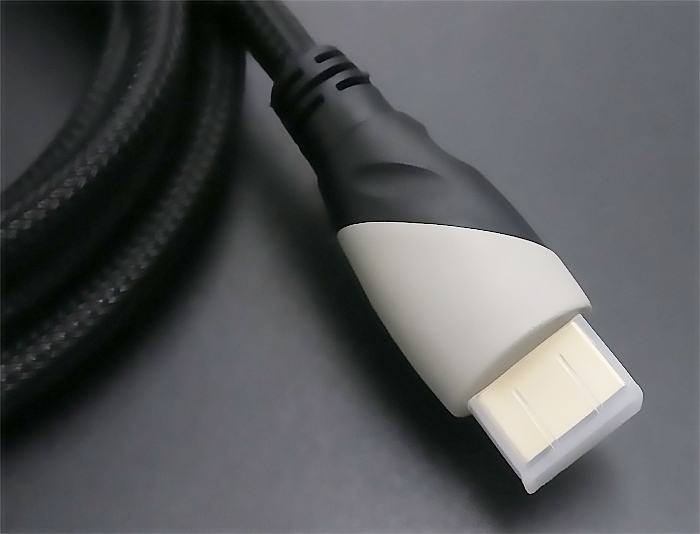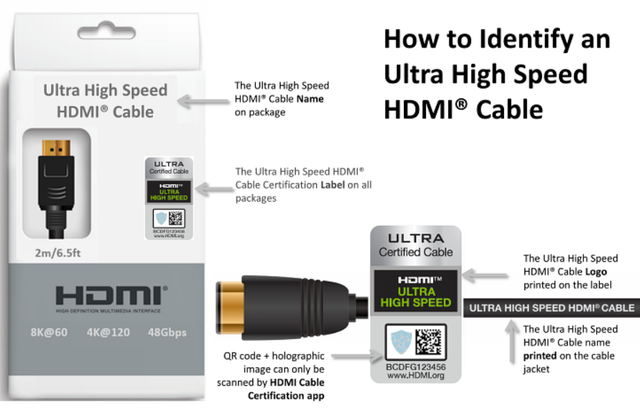



Because HDMI (High Definition Media Interface) can transmit video and audio data at the same time, the connection is simple, and the compatibility is good, it is widely used in consumer electronic products (such as TV sets, set-top boxes, projectors, etc.) . HDMI systems can be classified into four categories: Source, Sink, Cable, and Repeater. To ensure good compatibility of these devices, the specification makes Signal integrity requirements for electrical signals, the current mainstream HDMI standards are 1.4b and 2.0, which support maximum resolutions/refresh rates of 4k@30Hz and 4k@60hz, respectively. With increasing demand for higher resolution and refresh rates, the HDMI Institute released HDMI version 2.1 in November 2017, adding the FRL (Fixed Rate Link) mode, support for 8k@60Hz and 4k@120Hz, and bandwidth increase to 48Gbps


Microsoft's Xbox Series and Sony's PS5 already have HDMI 2.1 ports, and the new ultra-high-speed HDMI cable ensures high-bandwidth standalone features, including uncompressed 8K video that supports HDR. Ultra-low EMI (electromagnetic interference) to reduce interference to nearby wireless devices. The cable is reverse-compatible and can also be used for existing HDMI devices. With the popularization of HDMI 2.1 standard, more video and audio devices may support HDMI 2.1 in the future, for example, computers, smart tvs, power amplifiers, projectors, players and other equipment, but the biggest issue at present is whether HDMI 2.1 cable is produced using coaxial or twisted wire, which has been controversial in the industry, if the coaxial version is used for production, its physical properties such as softness and outside diameter are better than the twisted version, but the twisted version has inherent defects, the outside diameter is too large and the softness is not enough, the high-frequency performance can be adjusted so that there is little difference between the two. In addition, the manufacturing cost of the coaxial is obviously several grades higher than that of the pair of stranded wire versions. How to choose between them? Everyone is waiting to see what the big factory will do, today we'll talk about whether HDMI 2.1 cables are coaxial or twisted

At present, there are less than 10 certified manufacturers using the twisted version (very strange phenomenon, large factories are using coaxial sample, medium-sized professional HDMI factory sent samples are using the twisted version) , the status quo is that most of the tests are either in or in preparation for the coax version. Specifically, there are a few things to be aware of after the HDMI 2.1 release:/n/nHDMI 2.1 Cat 3 cable specifications compared with 1.4b Cat 2, HDMI 2.1 skew specifications are more stringent than HDMI 1.4b and 2.0. As you know, the longer the cable length, the more difficult these parameters are to pass, so everyone wants to get a longer length for their product when it comes to certification, but the longer the parameter, the harder it will be to pass, and it will require a higher level of line length matching and minimal mode switching, high-frequency parameters foundation part 07-propagation delay difference (SKEW) /n/nIn the differential insertion loss, the loss increases with the increase of frequency, and the peak of return loss makes the loss decrease rapidly, so the loss increases with the increase of cable length. HDMI cable and its transmission distance, mainly depends on the corresponding wire gauge material, so more mature technical parameters and equipment, to greatly enhance the stability of HDMI high-definition cable and transmission performance. Lesson 28[ RETURN LOSS ] /n/nHDMI 2.1 Cat 3 cable specification is the most difficult one EMI, as long as it involves TMDS signal problems are difficult to solve, line impedance imbalance caused by incomplete signal transmission, the quality and margin of the wire will affect the EMI test of the finished product! HDMI 2.1 certification test why is EMI failing?/n/nA coaxial cable is a composite of two conductors. The central wire of the coaxial cable is used to transmit signals. The Metal Shield Network serves two functions: first, as a signal, the common ground provides a current circuit for the signal, second, as a signal shielding network to suppress electromagnetic noise on the signal interference. The center conductor and the shielding net are between the semi-foamed polypropylene insulating layer, which determines the transmission characteristics of the cable and effectively protects the middle conductor. Today, USB4 and Lightning 4 or HDMI 2.1 use two coaxial lines for differential signal transmission, ucox is composed of two single lines of a differential pair, mode conversion is not easy to control, the standard has relaxed, from the previous -20 db to -17 db, it is better to adopt that kind of structure specifically. In fact, there is no good standard judgment. In the short term, the manufacturing cost of the Strand is lower, which is conducive to the promotion of the market. In the long term, coaxial version of the performance is easier to achieve and good stability, with the improvement of the manufacturing process, performance will be better than the price of choice, otherwise USB4 and Lightning 4 will not recommend the coaxial structure!/n/n/n/nThe article comes from: Cable Industry Friends Share Circle